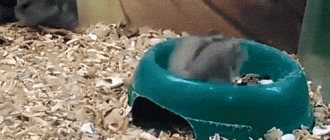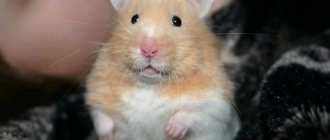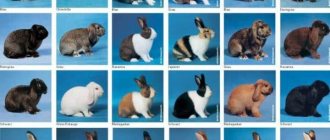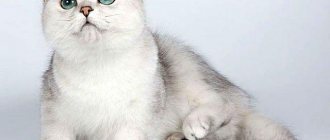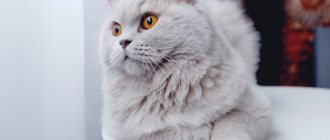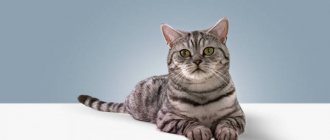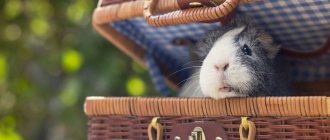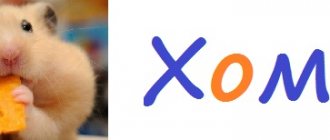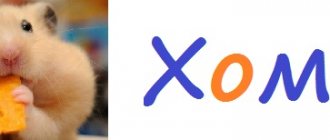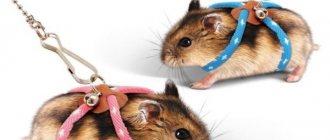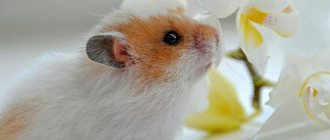A more correct name for this species is the Sungur hamster (Phodopus sungorus), but it was the name “Djungarian” that stuck, coming from the geographical region of China, from where these rodents were brought. They belong to the hamster family and, thanks to the vegetation on their legs, which completely covers their toes, to the genus Bryopods.
These animals can be distinguished by their pointed muzzle, protruding ears, and often by a characteristic stripe on their back.
These cute fluffies reach a maximum of 10 cm in length and are extremely friendly, playful pets, which is why they have become favorites of children. These animals can be distinguished by their pointed muzzle, protruding ears, and often by a characteristic stripe on their back. The tail is quite small in relation to the body, almost invisible, but the head against the background of the body is quite large , with large black (or red, in the case of some albinos) beady eyes, the body shape is round, weight varies from 30 to 65 g .
Dzungariki are very widespread in the southern part of Russian Siberia, Kazakhstan and Khakassia. Due to their habitat, dzhungariks have become popular in Russia. They can even be called the Russian hamster because they live in some of the arid regions of this country.
The white Djungarian hamster is no different from the rest of its relatives
Who is the White Jungarik?
Previously, these animals were classified as Campbell's hamsters. They have a great resemblance in appearance, but differ from them in softer and smoother fur and a smooth transition from the head to the nose. And at the present time, dzhungariki are recognized as a separate variety.
Read more about how to name a Djungarian hamster for a girl or a boy, and also learn how to train a hamster to respond to its name.
External description
Djungarians have the following distinctive features:
- dark stripe on the back running along the ridge;
- almost invisible small ponytail;
- soles of paws covered with shaggy fur;
- large head with large black eyes;
- more rounded body shape;
- The rodents’ body length is from 7 to 10 cm, and their weight is 30–65 g;
- very capacious cheek pouches, but smaller than those of Syrian relatives;
- They grab food with their front paws, just like marmots.
In addition to white, they may have other colors - for example, brown and gray, gray-bluish or creamy red. Only the abdomen of these animals is always light. Djungarians have seasonal adaptation: in winter they shed and their fur becomes almost white.
Character and behavior
Hamsters are peaceful and sociable animals that are very popular. They are well tamed and get used to hands, they even love to be stroked. They also really like attention. However, sometimes they can show aggression, reacting to what they consider a threat, or to an encroachment on their territory.
We advise you to read about how much Djungarian hamsters cost, what their life expectancy is, as well as how to find out the sex of a Djungarian hamster and how to accustom it to your hands.
These are territorial individuals and they do not like neighbors in a cage, so it is better to keep them alone - otherwise they can harm each other.
Djungarians are extremely mobile creatures, constantly active. They become most energetic in the evening. When a hamster roams around the apartment, you can accidentally step on it, so it is better to let your pet warm up with the help of a wheel in which it will run.
Rodent character
Djungarian hamsters are militant introverts. They are sensitive to the protection of personal space. These cute rodents fiercely fight the enemy if he encroaches on their territory. They use teeth and claws, causing terrible wounds. Male Djungarians warn their relatives about the invasion of aliens with sharp sounds, standing on their hind legs.
Domesticated animals also like to live alone. Hamsters quickly get used to people, they willingly allow themselves to be picked up, they like gentle stroking and calm speech. They are inquisitive and nimble. If you make sudden movements and make frightening sounds, the hamster may scratch and bite.
Choosing and arranging a home
For a pet to feel comfortable, it needs its own home. But it is necessary to remember that hamsters are rodents, so the cage must be appropriate.
It will be useful for you to read about what kind of cage a Djungarian hamster should have.
Size and material
Some owners keep their charges in aquariums, but this is harmful for the hamsters, since such housing has poor ventilation and an inappropriate microclimate. The best option would be a cage, and there are many of them on sale now.
Video: which cage to choose for a Djungarian hamster
When purchasing it, you need to pay attention to the following aspects:
- Hamsters in nature either sleep or move (they run dozens of kilometers during the night), so the size of their home is very important. The area per animal should not be less than 1500 cm², that is, the cage size should be no less than 30x50 cm. Living in a cramped cage and lacking movement, the animal will be unhappy and sick.
- To keep your hamster's teeth healthy, your hamster needs something to chew on, so the bars in the cage must be strong. It's best if they are made of stainless steel - then you don't need to paint the rods, and your pet won't eat the paint.
- Dzungariki are very nimble creatures that can penetrate small crevices. Pay attention to the dimensions between the bars to prevent your pet from escaping. If the hamsters are still small, then the gaps should not be more than 5 mm, for adults - a maximum of 15–20 mm.
- It is believed that cages with horizontal bars are better because the rodent has additional ladders.
Important! A spacious cage is not enough for a hamster to live comfortably. He either sleeps or is in motion, and for this he needs a cozy house to sleep in and a sufficient number of different running “attractions”. - For an animal, a large multi-story cage will only be a joy, but you will have to clean it, so when purchasing large “apartments” for your pet, think carefully.
What does a hamster need in a cage?
Buying a home is only half the battle; you need to equip it.
The dzhungarika cage should be equipped with the following items:
- A rest house where the rodent will not be disturbed during the daytime nap. It is better if it is made of environmentally friendly plastic rather than cardboard (impractical), wood or ceramics (expensive).
- Important elements are feeders and drinkers. The feeder should have dimensions of about 3x10 cm, and it is better if it is ceramic (heavy) so that the hamster does not turn it over. The animal rarely drinks water, but a drinking bowl is needed. An ordinary plastic one will quickly turn over, so the best option would be a “nipple” drinker attached to the wall.
- The hamster is a very active creature that loves to overcome obstacles. To do this, he will need a running wheel, various ladders and tunnels. The running wheel can have a mesh or solid surface, and a diameter of about 17 cm.
- To grind down teeth, the rodent must have a special stick or mineral stone in the cage. A branch of a fruit tree (except apricot and cherry) is also suitable for this purpose.
- A toilet for small rodents, which is filled with special fillers.
- You can put a bathing suit in the cage, filling it with sifted clean sand.
- Compressed sawdust or fine sand are used as bedding - these materials absorb moisture well and absorb odors. Cotton wool or wool should not be used. Hamsters use scraps of newspapers or napkins to build a nest.
Where to place the animal
When deciding where to place your hamster cage, you need to consider the following:
- it should not be in a draft or in the sun;
- heating devices will also negatively affect the pet;
- It is also better to place noisy objects (TV or computer) further away.
Important! Make sure that the cage is always closed so that the hamster does not escape. At best, it can ruin things, and at worst, you won’t be able to find it.
External characteristics
Dzungarian hamsters differ from their close relatives Campbell's hamsters in having softer and smoother fur. And also the transition from forehead to nose is smoother. The Djungarian hamster is also characterized by a number of the following external characteristics:
- on the back there is a dark stripe that runs along the entire ridge;
- the tail is small, almost invisible;
- the soles on all paws are shaggy;
- the head is quite large in comparison with the body, with large black beady eyes located on it;
- the body shape is round, the length varies between 7–10 cm;
- weight is in the range of 30–65 g;
- the cheek pouches are roomy;
- Djungarians grab food with their front paws, just like marmots do.
The color of domestic Djungarian hamsters is very different from the coat that wild animals have. There are several possible fur color options for domestic dwarfs:
- “standard” is represented by brown fur with a gray tint; the fur on the belly is white;
- “sapphire” is identified by gray fur with a bluish tint and a white belly;
- “pearl” is a matte coat with a white color, which is diluted with gray spaces;
- “tangerine” is represented by a light red color of a cream shade.
Care and maintenance
The downside to keeping Djungarian hamsters is that they live a short life - only 2-3 years. You need to make every effort and create comfortable conditions so that the animal lives longer.
Regular walks around the apartment
If you have enough time to monitor your hamster as he walks around the apartment, you can let him out.
Did you know? In nature, a male
hamster can mate with many females, but only helps raise the offspring of one.
But don't leave it unattended and remember:
- they climb up easily, but become very clumsy when going down and can fall;
- rodents love various crevices in which they can get stuck;
- various wires and sockets should be out of reach of hamsters;
- containers with water must be tightly closed or removed;
- cacti, geraniums and other dangerous or poisonous plants should also be hidden;
- you need to be careful with fabric products (carpets and upholstered furniture), because hamsters love to carry scraps of material into their nest;
- if there are cats or dogs in the house, they need to be locked somewhere for a while;
- Look carefully where you stand or sit so as not to crush your pet.
An alternative to simple walks around the apartment can be moving the hamster in a special ball. This is a transparent plastic sphere with an opening hole where the hamster can be placed - so he can travel around the cage and throughout the house. This movement is much more interesting than a running wheel. The animal is busy and will not do any harm.
Grooming
The Djungarian hamster is a very clean animal and takes care of its fur on its own, so it does not need water treatments. He “bathes” in a container of sand and licks the fur. Many owners never wash their pets, but if the rodent is very dirty, it can be washed under a gentle stream of warm water.
Immediately after this, it must be dried and warmed so that the animal does not catch a cold - a cold is almost always fatal for them. In addition, it is forbidden to wet your head while swimming. In general, bathe the animal only as a last resort; It’s better to just wipe the fur with a damp cloth.
Djungarians have short fur, so cutting and combing them is not necessary. Well, if such a desire appears, use a toothbrush or doll comb for combing. These procedures can psychologically traumatize the hamster, so think before you “care” for your pet in this way.
Hamsters can go into torpor (different from hibernation in time) for several hours. In this state, they tolerate low temperatures or lack of food. Take the animal in your arms and warm it up - and it will come to life.
Care for claws and teeth
The animals grind their claws down on special sticks on their own. Nails need to be trimmed only when they become very long. It is advisable to have this done by a veterinarian, but if you decide to do it yourself, you can purchase a nail clipper or use nail scissors.
We recommend reading more about breeding and reproducing Djungarian hamsters at home.
This must be done very carefully so as not to catch the blood vessels and cut off only the keratinized transparent part of the claw. The presence of a mineral stone in the cage has already been mentioned - it is needed to grind down the teeth, because in hamsters they grow throughout their lives. You can also buy special sticks or toys for this purpose.
Cleaning the cage
Many people think that a rodent in an apartment means a constant unpleasant odor, but everything will depend on you. If you clean frequently and thoroughly, no unwanted odors will arise. Cleaning is carried out as needed, but at least once every 10 days.
The process itself consists of the following stages:
- Before doing the actual cleaning, you need to move the animal to another cage or jar.
- Pull out the tray, wash it in plenty of warm water, preferably without using chemicals.
- After this, change the bedding, but leave some so that the animal can smell its scent.
Important! When cleaning, you need to try to leave everything in its place , because the animal has put a lot of effort into each structure.
Hamsters love to store food in reserve, so after checking its “pantry”, throw away only the spoiled foods and leave the good ones. - Wipe the cage bars well.
- Now you need to pay attention to all the accessories. Wash them too well in warm water and place them back.
- Particular attention should be paid to the toilet. You need to wash it a couple of times a week.
- At the end of cleaning, give the animal food to reduce its stress - after all, it will need to run around everything and re-mark every corner.
Video: how to clean a hamster's cage
Djungarian hamster - diseases
Injuries
Djungarians usually get it when they fall or other unfortunate circumstances while running. The main symptoms are curvature of the limbs and problems in moving the pet. The rodent's condition may be accompanied by shock. You should show the jungarik to a veterinarian, who will give recommendations for recovery depending on the severity of the injury.
If your dwarf sniffles and sneezes, and its activity is significantly reduced, it is likely that your beloved pet has been exposed to a viral infection
.
The principle of such diseases is no different from human ailments, so the virus can easily be transmitted from a person to a dzhungarik, and vice versa. There is no treatment as such, but try to provide your rodent with fresh vegetables and fruits. This will improve his immunity and speed up the healing process.
If your pet's eyelids are stuck together, a bacterial infection may have developed into conjunctivitis
.
As a treatment, it is recommended to gently rinse the eyes of the dzhungarika with salted water. If your rodent's pupil area is gray and the lens of the eye is quite cloudy, your hamster may have cataracts
. Typically, this disease of the Djungarians manifests itself in old age and cannot be treated. Just accept your beloved pet for who he is.
Mother with offspring photo can be enlarged
Your rodent's sudden refusal to eat any food may be due to trauma to his teeth
. Check to see if your Djungarian hamster's incisors are broken off. In addition, there are cases when the dzhungarik is hampered by its too long teeth. In such situations, you should straighten your pet's teeth. It is best to have your hamster's incisors trimmed by a qualified veterinarian.
If your dwarf's skin is peeling or hair is falling out, it is quite possible that this is a symptom of a disease such as dermatophytosis or eczema.
. Typically, these ailments are associated with the constant stress of the Djungarian hamster or an allergy to something new in the rodent’s cage. You should seek help from a veterinarian. He will prescribe you the courses of antibiotics necessary for your pet’s recovery.
If your hamster constantly scratches itself, and there are many wounds and red spots on its body, your hamster is probably living with lice or ticks
. In this case, it is recommended to contact a veterinarian and find out which lotion or aerosol is suitable for your dwarf and will not harm its health. Do not use medical products unless you are sure they are safe for use on rodents.
Severe diarrhea, accompanied by copious discharge with a very unpleasant odor, loud bubbling in the hamster’s stomach are signs of intestinal diseases. Bacterial infections of this kind can be easily cured with the help of special medications. Be sure to seek help from a veterinarian.
What to feed at home
Djungarians are not picky about food, but to keep your pet healthy, you need to give it a varied diet. You should feed twice a day (morning and evening).
What is possible
The best option would be store-bought mixtures for hamsters, which contain the grain products they need.
But it is not advisable to feed mixtures alone, so you can include in your rodent’s diet:
- grains (wheat, rye, corn, sunflower seeds);
- vegetables (carrots, zucchini, pumpkin, cucumbers, etc.);
- fruits (apples, apricots (pitted), bananas);
- lean meat (chicken or rabbit);
- boiled eggs;
- skim cheese;
- nuts;
- greens (lettuce or plantain).
The diet is compiled individually, according to the preferences of the animal. Give your pet so much food that the next day there will be almost nothing left of the portion (make sure that he really ate everything and did not hide it in reserve).
Find out what you can and cannot feed Djungarian hamsters at home.
Soon you will decide for yourself how much to give. The ratio of various components is also determined individually, taking into account the fact that it is useful to diversify food.
Approximate daily diet:
- fresh herbs – 300 g;
- vegetables – 50 g;
- cereals – 20 g;
- root vegetables – 15 g;
- bread – 15 g;
- hay – 10 g;
- milk – 10 ml.
Occasionally you can pamper your pet with strawberries or raspberries, but it is better not to overdo it with berries. In addition, we must take into account that although hamsters drink little, the presence of fresh water is necessary.
Description
The Djungarian hamster is also called the Siberian hamster and the Djungarian hamster. It belongs to the hairy-footed hamster family, which is represented by only 3 representatives. In nature, these animals live in Western Siberia, northwestern China, Mongolia and Kazakhstan.
Campbell's dwarf hamsters are very similar to dwarf hamsters. These two species can interbreed, creating hybrids. Such experiments are undesirable. Male dzhungarikas have a single gland, the work of which is responsible for creating a male odor. This gland is located below the abdomen, it often has the appearance of a bulge and can be covered with an oily secretion.
Albinos are rare among Djungarian hamsters. In the wild, the Djungarian hamster changes its coat to white, which allows it to camouflage itself among the snow and hide from predators.
At home, this feature is rare. Domestic dwarfs have a short life expectancy. Usually it is about 2 years, only in rare cases can a hamster live 4 years.
How to determine age?
Due to the fact that Djungarian hamsters are quite small in size, and they do not grow with age, it is very difficult to find out how old they really are. However, there are several ways to determine the more or less exact age of furry animals.
- The younger the hamster, the more active lifestyle it leads: animals sleep less, move more, and therefore eat more. Old animals, on the contrary, prefer to sleep and eat very little.
- There is practically no hair on the ears of old hamsters, while the ears of young hamsters are completely covered with it.
- Young animals have clear and shiny eyes. With age they become cloudy.
- Newly born hamsters do not have hair - they begin to become covered with hair only on the 5th day of life. After 2 weeks the fur is fully grown.
- Young hamsters aged from 1 to 3 months (and these are the animals you should buy) weigh no more than 40-45 grams.
Why know gender?
There are a number of reasons why gender determination is indispensable:
- Without knowing the gender, it is difficult to choose a nickname.
- If you plan to keep several animals, knowing the sex will help to avoid problems with the placement of animals, since females and males are aggressive towards each other, then they must be kept separately.
- An animal purchased in a store can present a surprise in the form of pregnancy, and if you are not inclined to take care of a family of hamsters, then it is better to purchase a male.
- To avoid purchasing same-sex hamsters.
In addition, males are less aggressive and more friendly towards people.
Diet
Pet stores offer a wide selection of ready-made mixtures that are intended for hamsters. The diet should not consist of mixtures alone. For variety, you can add a number of products:
- grain crops (wheat, corn, sunflower seeds, rye);
- from vegetables you can give carrots, pumpkin, cucumbers, zucchini;
- You shouldn’t get too carried away with fruits; sometimes you can offer your pet apples, bananas and apricots, but be sure to pit them;
- from meat you can only choose chicken and rabbit;
- boiled eggs (chicken, quail) can be included in the diet of Djungarians;
- cottage cheese should only be low-fat;
- from greens you can give plantain leaves and salad.
Each hamster requires the selection of an individual diet that will suit its preferences. The amount of food should be enough for a day. You should also always remember about the foods that should not be given to your pet:
- foods high in fat (butter, milk and cottage cheese with a high percentage of fat, veal, beef and pork);
- seasonings and spices, including onions and garlic;
- sweets and foods that can freeze in the animal’s cheeks;
- exotic fruits and citrus fruits;
- semi-finished products, including sausages;
- raw potatoes are also prohibited;
- watermelons and melons.
Reproduction
In captivity, dwarfs reproduce well. This requires compliance with some mandatory conditions:
- the female must be older than 4 months, and the male must be more than 3 months old;
- pregnancy lasts about 3 weeks, during this period protein foods (cottage cheese, breast and boiled yolk) must be included in the female’s diet;
- during pregnancy and until the end of feeding, the female should be at rest;
- before birth - approximately 2 days - the cage is disinfected, including all accessories and toys;
- During the first 3 weeks, the cubs feed on their mother's milk; during this period, they are strictly forbidden to be handled, since the young mother can abandon her children and even eat them.
Nuances of definition for other breeds
The sex of dwarf hamster breeds is more difficult to determine; their testicles are practically invisible. Here you have to focus only on the differences in the distance between the anus and genitals. In addition, the female is distinguished by a smooth lower abdomen, and the male is almost always moist due to the actively working gonads.
Sex characteristics are especially important when purchasing multiple hamsters. In this case, one has to take into account their compatibility, ability to mate and procreate. You should not provoke the early occurrence of these processes, because a female that is too young may face death during childbirth. Therefore, having designated the gender of the acquired pets, it is better to house males and females separately until the girls reach puberty. And it is better not to place two “ladies” in the same cage at all - there is a very high probability that they will not get along in the common territory. Males are more compliant in this regard, but in nature they mostly live alone
It is important to take all these factors into account, and then your pets will be a constant source of positive emotions
Bottle with drinker
Such an accessory will come in handy during street walks. It does not take up much space, weighs little and does not hinder movement. But you can offer the dog to quench his thirst at any time, and not wait until he starts drinking from a dirty puddle or lake overgrown with mud.
The device consists of a water container and a bowl equipped with a dispenser button. It allows you to release as much liquid from the bottle as the animal needs to quench its thirst. Sold in two volume options - 350 and 550 milliliters.
Price – 475 – 584 rub.
Another model of the same device has a folding shape, which makes it easier to carry. The transformer connects the bowl and the bottle, securely fixing them in such a compact state. The durable polymer material has good shockproof properties and can even resist dog teeth. True, this struggle will not be long and - if the owner is careless - then all the liquid will end up on the ground.
Volume 250 ml.
Cost – 133 – 148 rubles.
I like1I don't like
Simple wire cutters
The most primitive device is very similar to ordinary scissors. Only one of its cutting surfaces is equipped with a small notch with a sharp edge. Using such a device is easy, provided you have some skill and experience. For young dogs, nail trimming is always stressful. They do not want to sit quietly, they strive to tear the paw out of the owner’s hands and in every possible way complicate the process. So Litbro.ru will not recommend such a gadget to novice dog breeders. The risk of causing serious physical injury to your pet is too great. Well, for experienced owners who have used similar tools more than once, nothing better can be desired. Cheap and very effective.
Cost – 35 – 72 rubles.
More advanced versions of hand cutters offer expanded functionality.
Although their main part, in the old fashioned way, is based on two cutting surfaces. Service additions imply only human convenience. Models with rounded ends, a container for cut claws and lighting have proven themselves very well. The fact is that some dogs have the habit of looking for clipped ends on the floor and eating them. Sharp, bent cuttings can damage the stomach wall and cause bleeding. A small “waste collection” effectively solves this problem.
Price – 636 rub.
Another gadget from the line of simple nippers has comfortable ergonomic handles that allow you to securely hold the tool while trimming nails.
This is important when the animal gets nervous and breaks out.
We pay attention to one more detail - the expansion spring. It fixes the cutting surfaces in the open state, which makes the operation somewhat easier.
Otherwise, the functions of the device duplicate all the features of its predecessors. To properly shorten claws, you must have the skill and achieve unquestioning obedience from your dog or cat.
Cost – 229.93 rubles.
Health of albino hamsters
Mutation in any manifestation causes harm to the body. The white rodent is susceptible to the following diseases:
- Skin diseases. These include lichen, scab and dermatophytosis. The skin of rodents is delicate and suffers greatly from direct sunlight. Snow-white animals are more susceptible to the formation of papillomas and tumors on the skin than others.
- Eye diseases. Albino hamsters often suffer from these diseases. Their eyes are highly sensitive; the bright sun can burn the retina. As a result, blindness will occur.
- Stress. There is a relationship between the melanin pigment and stress. Rodents with white coats have no pigment at all, so they are more susceptible to stressful situations than other representatives of the breed.
- The health of snow-white rodents directly depends on exposure to sunlight on the skin. The bright sun can cause blindness, skin burns and stress in the animal. The cage with the pet must be installed in a darkened room.
